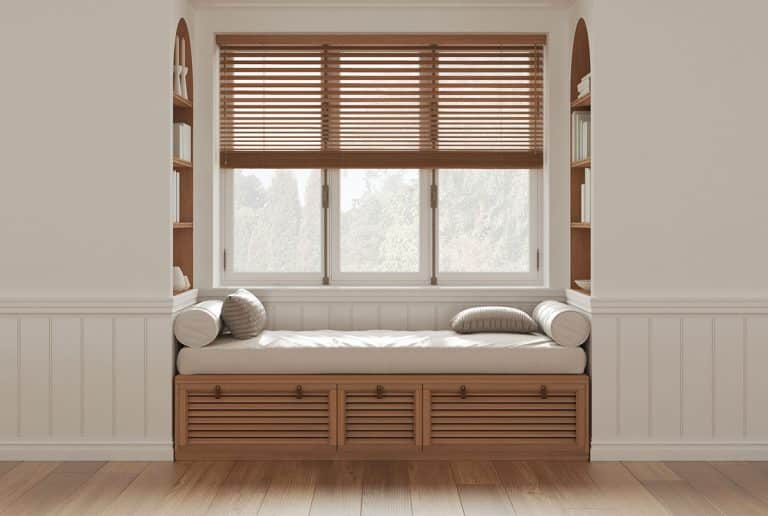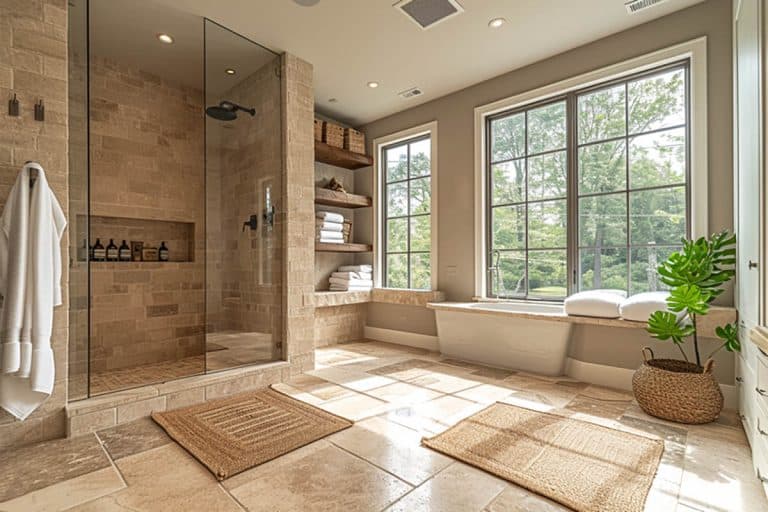Artificial Marble (Types & Comparison Guide)
Here’s our guide to artificial marble including its pros and cons, costs, comparison to natural marble, and the types of engineered marble to use for your floors and countertops.
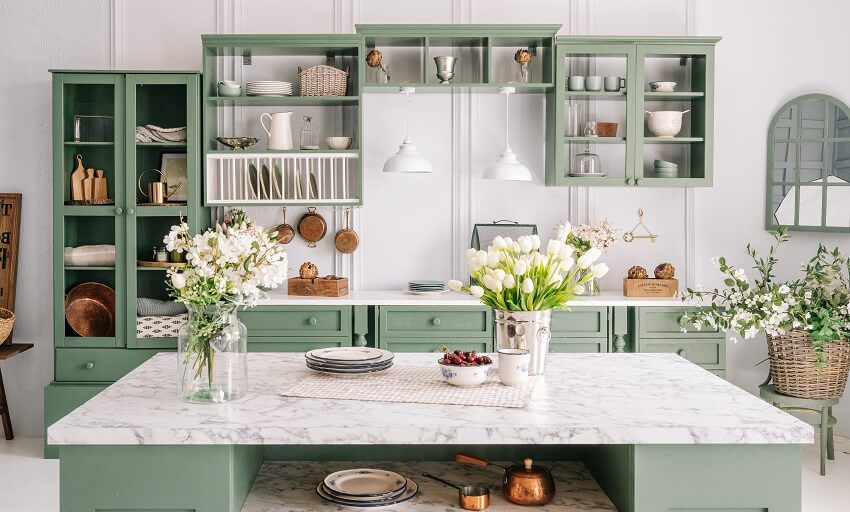
And yes, you will be able to enjoy the aesthetics that come from natural marble without actually having to spend a lot of money and pay for it.
What Is Artificial Marble?
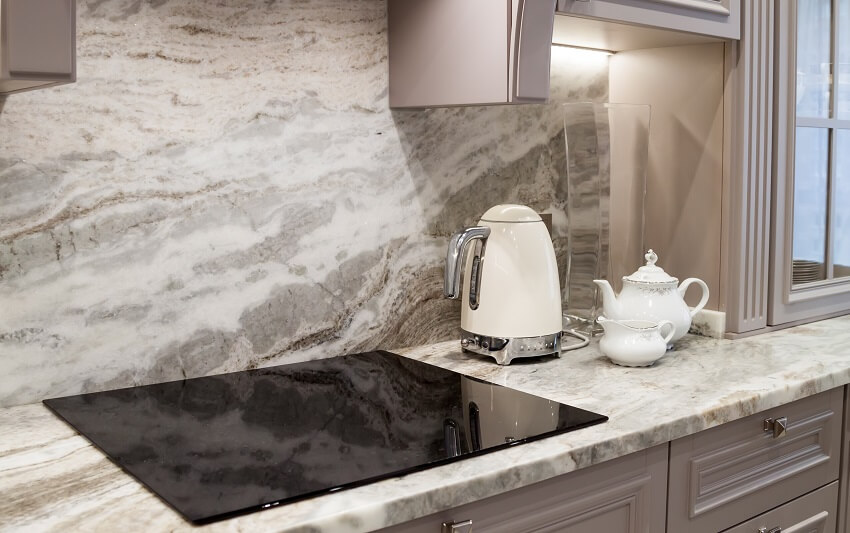
Artificial marble is also called cultured, composite, synthetic, or engineered marble and is the product of resourcefulness and the advancement of technology.
This man-made material can be made from the following (this depends on what the makers want to use and what are available):
• Small marble debris
• Stone powder
• Plastic
• Cement
• Quartz
• Sand
• Colophony
• Acrylic glue
These materials are mixed together under in vacuum under high pressure so as to solidify the solution into hard marble rocks. They are cost-effective and can be used in a variety of ways, from floors and walls to kitchen countertops and furniture.
Artificial marble delivers beauty and elegance without the larger price tag that comes along with it. Besides that, there are other advantages from using engineered marble, including the following:
• Easily customizable, remodeled, and shaped
• Extremely durable
• Highly resembles a natural marble
• Hassle-free and affordable maintenance
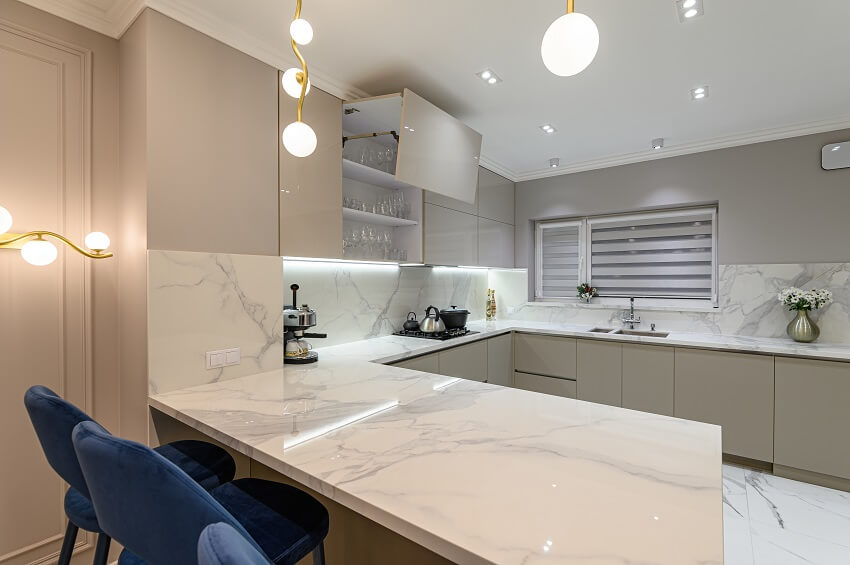
Manufacturing can be varied and so they can differ in quality. And with prolonged usage, cracks can appear due to its gel coating.
Now that you know the pros and cons of using artificial marble, how would you identify one in the market? Besides the price and a label saying that it’s synthetic marble, here are some of the characteristics you can use to identify it from natural marble.
• Has bolder and more powerful colors (e.g. turquoise and dark orange)
• Glossier than natural marble
• Little or no damage at all
• Different and sometimes “fake” texture
Man made engineered marble is your option if you have a low budget and plan to install the marble in harsh environments like the bathroom and kitchen.
If you want further proof that what you’re buying is artificial marble, you can do a trial first. Buy one and conduct a wear test like pouring oil or soy sauce. If it leaves a mark, there’s a high chance that it’s not artificial marble.
Types of Artificial Marble
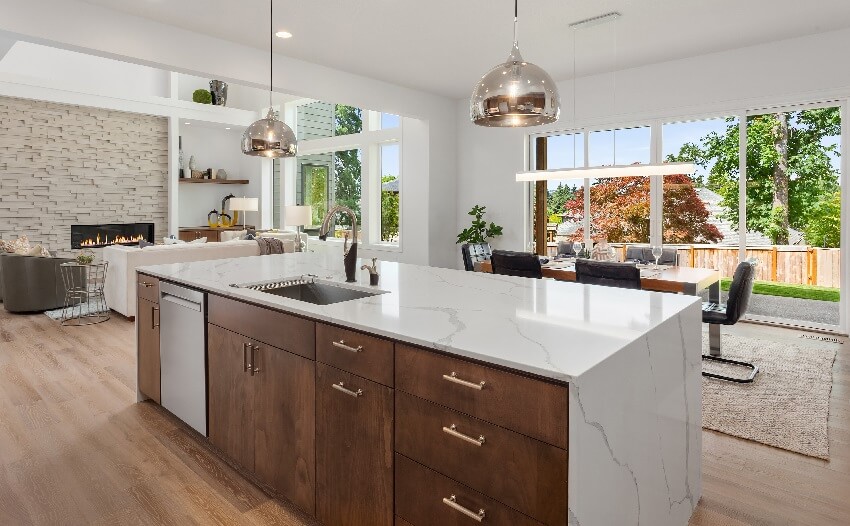
• Marbelite – created by heating potassium alum in water and mixing 10% heavy spar and marble dust
• Exsilite – created by mixing Silica grains and pigment, which will result in something similar to an Onyx marble slab
• Marezzo – created by using Keene’s cement to imitate the look of natural marble
Artificial Marble Countertops
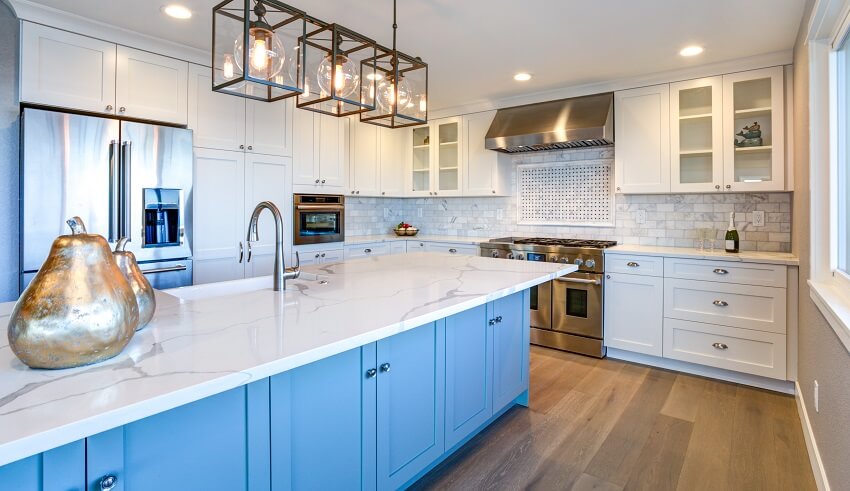
While commonly seen as white with different colors of veins, the engineered marble comes in different colors too, even bolder and much trendier colors.
With a variety of options to choose from, this gives you more freedom to style your kitchen however way you want to. You can give it a classic and sophisticated look but you can also give it a modern twist.
Another great thing about engineered marble countertops is the fact that it’s more durable and strong in structure, making them a nice fit for your kitchen. With the food preparation that happens in the kitchen, splatter and stains are normal.
Scratches can also be expected. With artificial marble countertops though, these are less likely to happen.
Artificial Marble Flooring

This means you won’t have to worry too much about running your marble floor ragged with all your pacing.
Your engineered marble flooring also won’t rob you because of its high price tag. What you get instead is a sophisticated marble that imitates closely the look that natural marble has without paying for it too much.
Artificial Marble Slabs
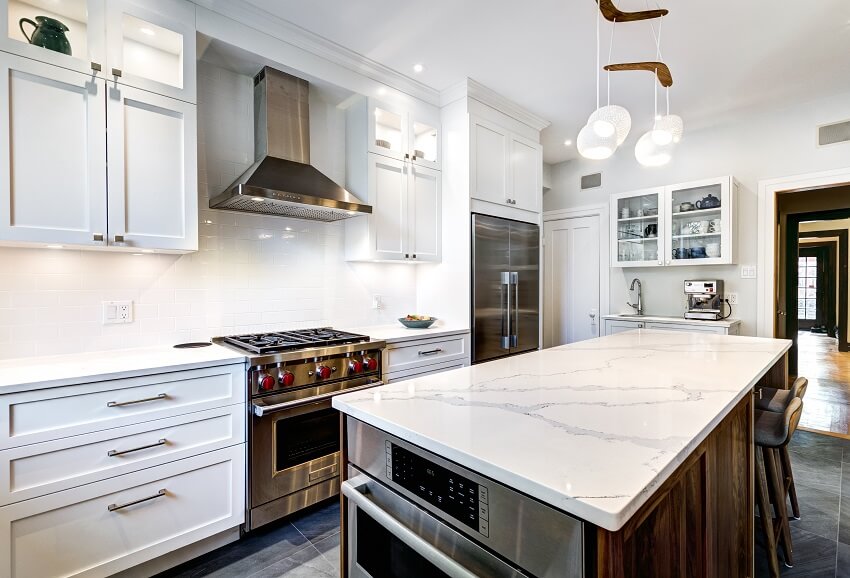
The solution can be comprised of cement and sand, besides the marble tidbits. Acrylic glue is also needed to bind everything together.
Artificial Marble Cost
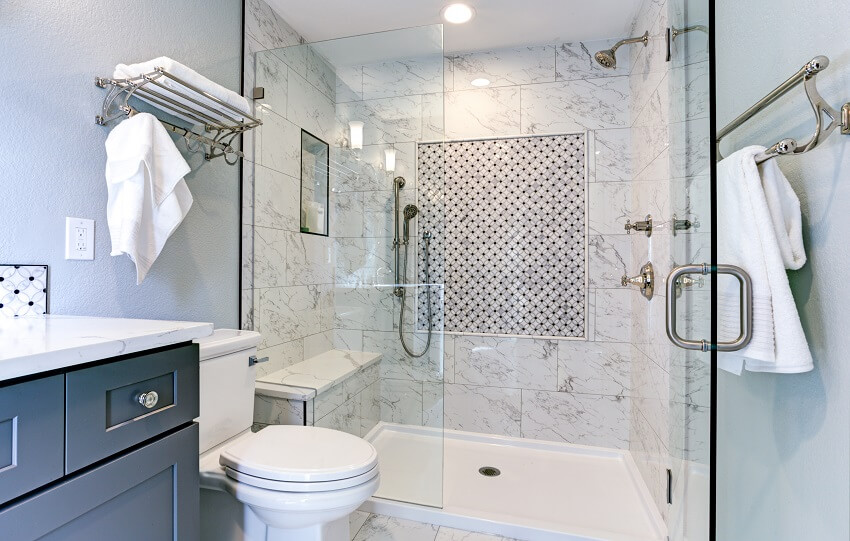
The former is more affordable than the latter since the installation of artificial marble tiles per square foot costs around $15 to $55 while the installation for artificial marble countertops costs around $40 to $70 per square foot.
Artificial Marble vs Natural Marble
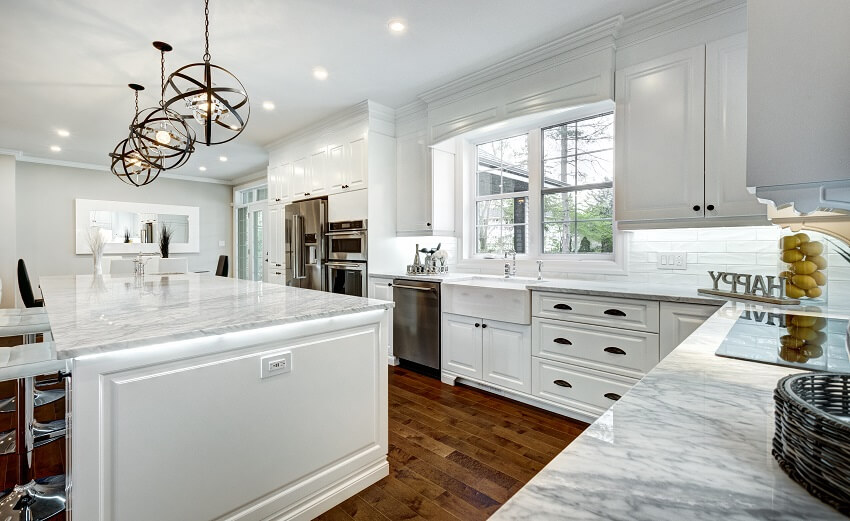
Here are the different characteristics of artificial marble and natural marble:
| Characteristics | Natural Marble | Artificial Marble |
| Price | Expensive (Availability, cutting, and quarrying can be costly) | More affordable (Easily created in a quarry with few elements) |
| Options | Available colors depend on the impurities of the stone | Diverse patterns and colors (colors are artificially added to the slab) |
| Installation | Requires a skilled workforce (Can lead to marble cracking, curling, discoloration, and popping when wrongly installed) | Hassle-free and less fragile installation (adjusting and cutting do not require professional touch) |
| Maintenance | High maintenance & Costly (Requires resealing every 6 months) | Hassle-free & non-porous (Requires lower upkeep and maintenance) |
| Weight | Can be hefty | Comparatively slimmer & lighter |
| Durability | Hard but brittle (Avoid spilling acidic substances, cleaners, and oil at all cost) | Resistant to discoloration, oil, and stains (Compatible with regular cleaners) |
| Heat Resistance | Can undergo immense heat and pressure (The natural stone was formed by geographical activity) | Lack of heat resistance (Risks melting/burning under a high temperature) |
| Customization | Cannot be customized (Crafted from naturally occurring limestone) | Can be shaped and remodeled based on user preference |
| Cleaning | Requires meticulous cleaning and resealing | Difficult to remove scratches |
Visit our guide to composite marble for more related content like this.



